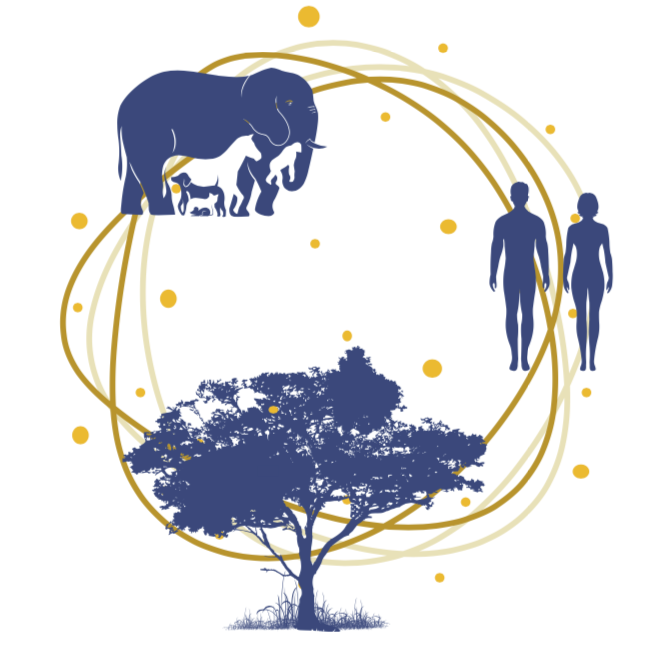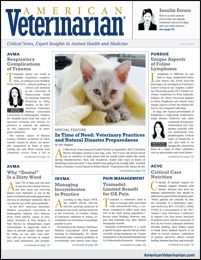In the trenches: The veterinarian's role in the One Health movement
By the nature of their knowledge and expertise, it is incumbent on veterinarians to promote this global initiative and educate medical doctors as equal partners in improving health around the world.

One Health—the global initiative to achieve optimal health for people, animals, and the environment—is more important today than ever. Experts estimate that more than two-thirds of emerging and reemerging infectious diseases are vector-borne or zoonotic, and that most of these zoonoses originate from wildlife.1,2
RELATED:
- Using One Health to Tackle Antibiotic Resistance
- Combatting Obesity in Pets and People: A One Health Approach
There is no doubt that this collaborative, species-spanning approach to health care has grown exponentially over the past 2 decades, but there remains much ground to cover for full acceptance and application. Audrey Ruple, DVM, MS, PhD, DACVPM, MRCVS, assistant professor of One Health epidemiology at the Purdue University College of Veterinary Medicine in West Lafayette, Indiana, spoke with American Veterinarian® about this important health care initiative and how it is incumbent on veterinarians—who, by the nature of their work, play a significant role in both human and animal health—to advance the cause.
Are veterinarians thinking as much as they should about One Health?
Audrey Ruple, DVM, MS, PhD, DACVPM, MRCVS: The One Health mindset is inherent to being a veterinarian. I think all veterinarians are One Health practitioners, trained to see the entire world through a One Health lens, but some veterinarians may not be consciously aware that this is their perspective. Veterinarians are an integral part of the One Health movement, and we are seeing a change in how other medical professionals are recognizing our value as part of the entire medical community, which I like to think of as a puzzle with many interlocking pieces. Veterinarians own a big part of this One Health puzzle that physicians don’t have, as physicians are not routinely trained in zoonotic diseases in the same way veterinarians are.
How can veterinarians spread the word to MDs?
When I do One Health talks for veterinarians and I ask if people have heard of One Health, almost everyone raises their hand. When I ask the same question in a room full of MDs, almost no one has ever heard of One Health. It’s a message that our profession has done a really good job in communicating to each other, but we haven’t been as great about spreading the word outside of our profession. I think many veterinarians see themselves as working in a silo rather than seeing how their work interlocks with the rest of the puzzle.
To get the message out, we should talk to our counterparts in human medicine as our equal partners in health care. We should say: “Here’s the entire health landscape—here’s this piece that you have, and here’s this piece that we have, let’s work together to see how they fit together.” We have some really good examples in the past few decades where we have formed very successful teams of One Health practitioners: MDs and DVMs with different specialties like oncology, toxicology, and virology. When we bring a whole team together we can solve the puzzle faster than any one of us could on our own.
Lyme and other vector-borne diseases are great examples of this as the geographic ranges of vectors are changing. Say you’re seeing the incidence of Lyme disease increase in your practice area. Do you keep that information in your silo, or do you share it with other health care professionals in your area either by contacting physicians directly or by talking to the local health department? Missing that opportunity to work with other health care professionals can have real consequences, as MDs may not have Lyme disease on their differential list if they are not yet aware of its spread into the area. In a sense, animals can serve as sentinels of disease spread for humans, and it is part of our job to ensure the right alarm bells are rung on the human side of health care to ensure accurate diagnoses are being made in the human population in the area.
Are some medical specialties more in tune than others with One Health?
Obviously, any veterinarian working with zoonotic diseases is closely attuned to the overlap between human and animal health, but one specialty that has really embraced the One Health approach is oncology. In this field, the canine spontaneous tumor model is gaining traction as a model for human health because many cancers are molecularly identical between the 2 species. This makes it possible for us to leverage the data from 1 species to provide help for the other and vice versa. By utilizing data from both dogs and humans, we can get a complete picture of what’s happening in terms of both the prevention and treatment of many cancers.
The One Health approach has been embraced by the National Institutes of Health, which has created a comparative oncology program that studies cancers in dogs as models for human health.3 Another example of this is Stephen Withrow, DVM, DACVS, DACVIM (oncology), surgical oncologist and retired founding director of the Colorado State University Flint Animal Cancer Center, who pioneered a treatment for canine patients with bone cancer in which the diseased area of bone is replaced with healthy bone. This was developed in parallel with human limb-sparing techniques, and the procedure is now used across the nation to prevent amputation in both dogs and children diagnosed with osteosarcoma.4
How are zoos working with public-health professionals to address conservation and public-health issues?
Zoos have become increasingly active in conservation measures as well as in research and education—almost all of which involves the One Health perspective. The St. Louis Zoo, for example, has demonstrated how zoos can partner with schools of public health to create a learning environment in which students integrate their public-health knowledge into the environmental and animal health model provided by zoologic societies. The zoo’s partnership with the School of Public Health at the University of Missouri—Columbia has led to collaborations in which human health outcomes associated with visiting the zoo are examined. Through this collaboration they have noted health outcomes such as lowered blood pressure and decreased stress in humans following a zoo visit.5 The zoo has also done projects in Africa and on the Galapagos Islands.5 This approach provides a One Health educational experience for students of public health, veterinary medicine, human medicine, and environmental health.
How else can veterinarians get involved, or more involved, in One Health?
Veterinarians need to recognize that they own a part of the One Health landscape. There is a big piece of this puzzle that is completely ours, and no other health practitioner can do what we do. We also need to do a better job at communicating what we are already doing in One Health. We need to continue to be active, show up, and speak the One Health language, because the importance of the communication part can’t be understated. We need to toot our own horn as a profession, because we don’t do a very good job at that. If people don’t know what we are doing and how important our piece of this puzzle is, how can we complain when they don’t take us seriously as health care professionals?
I think there are still opportunities in veterinary medicine that we haven’t created yet. It’s going to take a person—and it often literally comes down to a single individual—who says, “I see a gap here and I’m passionate about this and I’m going to figure out how to close this gap for the betterment of both humans and animals.” I believe a lot of progress in terms of One Health is going to happen at a grassroots level. It is going to happen at the local levels where individuals are willing to dig in and do the work of creating a healthier society. On a national level, we need to do a better job at representing what we are doing not just at veterinary conferences but at physician conferences as well. We need to come to the table as their equals, their peers.
Research has shown that 50% of physicians acknowledge that they don’t know anything about zoonotic diseases or that they are uncomfortable with their knowledge of zoonotic diseases.6 Those same doctors also recognize that veterinarians are the best sources of information on zoonotic disease. So while there may be some physicians who will be resistant to seeing us as their peers, there are others who will walk with us to the table and work together to solve major health problems in all species. We will never know how much support we will get in this One Health adventure until we begin to show up consistently and speak up about own our piece of the puzzle.
References:
- Frank D. One world, one health, one medicine. Can Vet J. 2008;49(11):1063-1065.
- One Health Initiative will unite human and veterinary medicine [home page]. One Health Initiative website. onehealthinitiative.com. Accessed February 28, 2018.
- Comparative Oncology Program. National Cancer Institute Center for Cancer Research website. ccr.cancer.gov/Comparative-Oncology-Program. Accessed February 27, 2018
- Dr. Stephen Withrow honored with lifetime achievement award. Colorado State University College of Veterinary Medicine & Biomedical Sciences website. csu-cvmbs.colostate.edu/Pages/withrow-stephen-lifetime-award.aspx. Published February 2011. Accessed February 28, 2018.
- Robinette C, Saffran L, Ruple A, Deem SL. Zoos and public health: a partnership on the One Health frontier. One Health.2016;3:1-4. doi: 10.1016/j.onehlt.2016.11.003.
- Kersting AL, Medeiros LC, LeJeune JT. Zoonoses and the physicians’ role in educationg farming patients. J Agromedicine.2009;14(3):306-311. doi: 10.1080/10599240903058160.
